Electrical Igniters
By: Spatula Tzar

Electrical IgnitersBy: Spatula Tzar |  |
Electrical igniters, often referred to as "e-dets" or "e-matches", are one of the safest ways of initiating pyrotechnical reactions. Unlike fuse, the distance between the user and the device is not limited to one's athletic ability. Only inexpensive wire is needed to provide as great of a safety margin as desired. With the low cost and ease of production, there is no excuse for not employing electrical igniters.
There are four basic igniters for the home enthusiast: nichrome filament, copper filament, bridgeless, and the unique fuse clamp. Each has their strengths.
Nichrome igniters are fairly reliable, and a good tradeoff in terms of construction time. While a crimp joint is quick and strong (many of mine have even withstood an acetone peroxide detonation), it can degrade over time as the joint becomes oxidized. Nichrome wire can be found in old hairdryers, toasters, and even guitar strings.
 |
Begin by looping the ends of your lead wire. I used 24 gauge copper from an old ethernet cable. |
 |
Crimp the end of a piece of 26 gauge nichrome wire. Don't try to solder; it won't adhere to the nichrome and could cause a gap in the circuit. |
 |
Crimp the other loop over the nichrome and trim off the excess. |
Where reliability counts, copper filaments reign. The solder joint is strong, electrically sound, and long lasting--especially if silver solder is used. I use magnet wire taken from an old transformer.
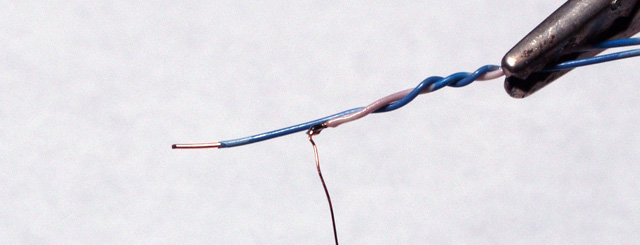 |
Solder the magnet wire to one of the lead wires. Extra heating time is required when using enameled wire. Be sure the joint is strong before continuing. |
 |
Wrap the filament around the other lead wire. Tighter coils tend to perform better, but really isn't necessary. If your wire is uninsulated, leave small gaps between the turnings to prevent them from shorting out. |
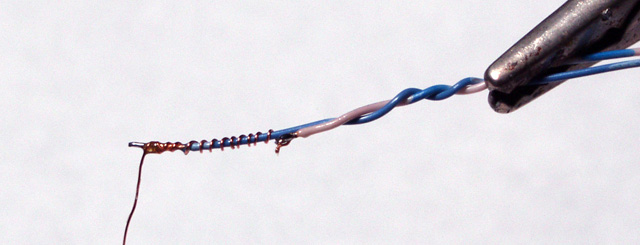 |
Finish winding, and solder to the other lead wire. |
As the name implies, bridgeless igniters do not use a filament wire. Instead, the leads are dipped in a conductive lacquer. With a little preparation, bridgeless igniters are cheap and very quick to make in large quantities. I formerly thought them to be unreliable, but further experiments with laquer mixtures promise a whole new wave of igniters, threatening to replace even bridgewires. More to come.
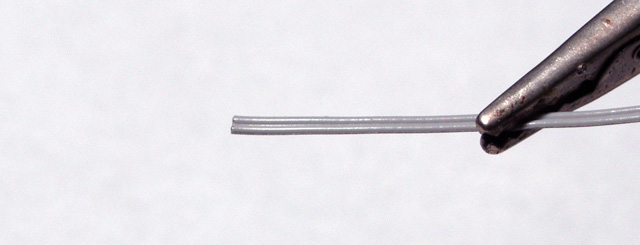 |
Old IDE computer cables are a great source of lead wire for this type of igniter. The parallel strands are melded together, and the spacing is the perfect distance. Split the cable into twenty pairs of wires. |
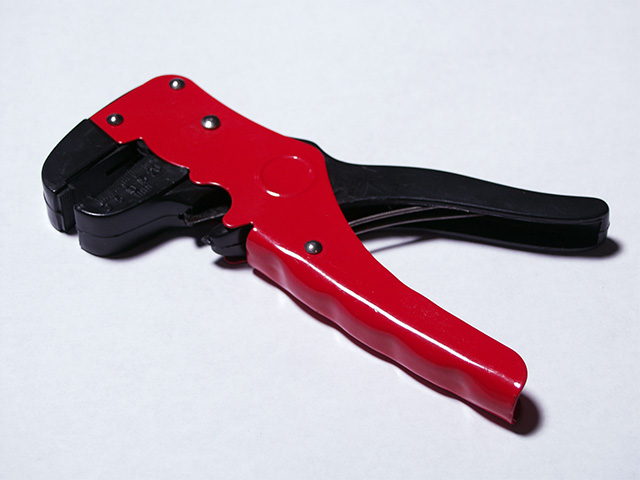 |
So far, this is the best wire stripper for ribbon cable I could find. The jaws automatically adjust to the wire diameter, cleanly removing the insulation on both wires at once. This however is its only strength. For every other type of wire I tried, it either gouged the conductor or missed the insulation entirely. |
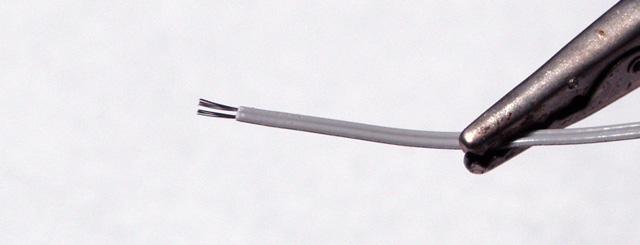 |
Using the aforementioned stripper, remove 5mm or so of insulation off the end of the wire pairs. Make sure the the leads are close, but not touching. |
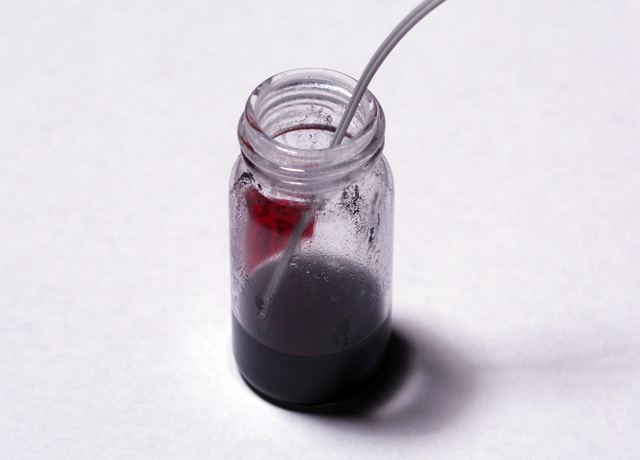 |
Mix up some lacquer by dissolving nitrocellulose in acetone. It should be thick enough for a blob to stick to the wires. Add some powdered graphite to make the solution electrically conductive. The graphite must be pure and very fine; ground up pencil leads will not work. The type I used was sold as a lubricant. Make sure the lacquer is saturated with it. Dip the leads in the mixture. A small glob should stick between the conductors. |
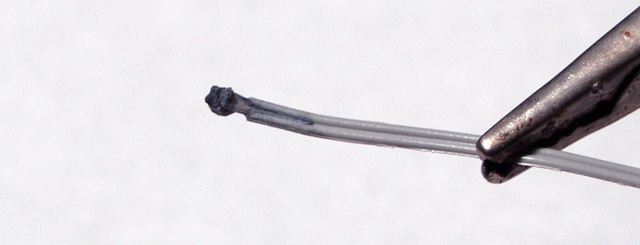 |
As the acetone evaporates, the resistance will slowly decrease to around 100-200Ω. With such high resistance, lower voltages can be used with this igniter. |
Bare conductors are usually sufficient to ignite most compositions, but some applications (usually fireworks and rockets) require a greater ignition temperature or longer burn times than the filaments can provide alone. The solution is to coat the igniter in some type of pyrotechnic material.
Bridgeless igniters, being acetone soluble, will be destroyed by most coatings. Fortunately, they already contain nitrocellulose.
 |
Nitrocellulose lacquer is the most basic coating. It is simple, and burns hot. If the layer is thick enough, it can serve as protection for materials that react badly with metals, although this should not be relied on. |
 |
When longer ignition times are required, the igniter can first be coated with nitrocellulose lacquer, then be dipped in black powder while still wet. This tends to work best in fireworks and rockets. Be sure to check if your composition is compatible with sulfur. |
In many cases, it is much simpler to use fuse instead of making disposable igniters. For that, fuse clamps provide a safe and reusable ignition source. The end of the fuse is clamped directly onto a segment of nichrome wire, keeping the igniter away from the device. It makes a great interface for commercial fireworks.
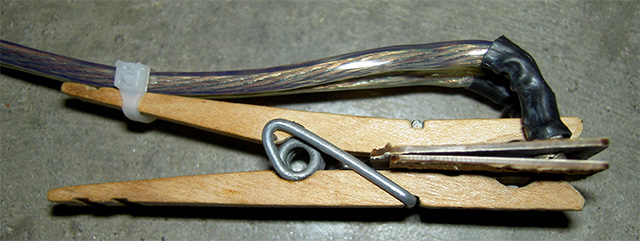 |
To make the clamp, glue a pair of formica squares to the jaws of an ordinary clothespin. They will serve to hold the nichrome and deflect any flame. |
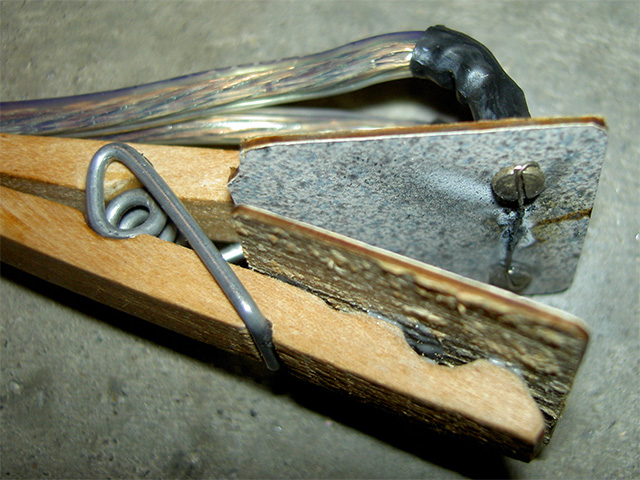 |
Drill two holes in one of the formica squares. Insert a pair of bolts, and secure a piece of nichrome wire in between the two. You can see from the scorch marks how well it works. |
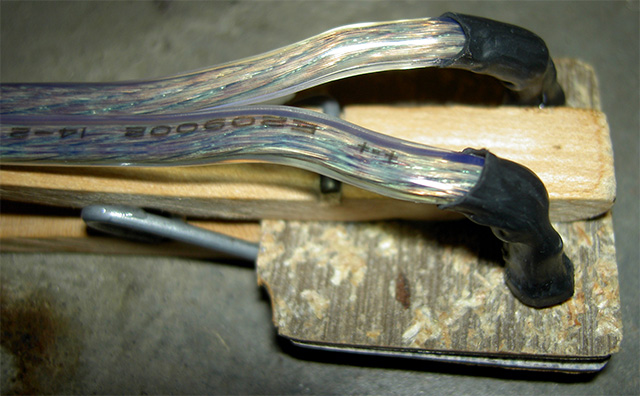 |
Solder the backs of the bolts to your lead wire, and cover the exposed metal with shrinktube. This clamp will last for hundreds of firings. |
Now that I have given you four cheap and easy ways to produce electrical igniters, you have no excuse for not using them. They are infinitely safer than fuse, since you can increase your distance by simply running more wire. And, should the need arise, ignition can be aborted at a moment's notice.
Be safe.
Bitcoin: 1KEWmWK3Sn9ToEHxhXmoXax6ycNGgLMfLv